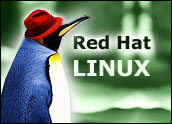
Red Hat announced at the Red Hat Summit this week its new operating system for the enterprise. Red Hat Global Desktop is a client product for the Linux operating system that delivers an enterprise-class suite of productivity applications.
The Global Desktop is part of Red Hat’s strategy of building innovative solutions that change thetraditional notion of desktop computing for specific audiences, according to the company. The goal is to create experiences that are more useful, more powerful and more accessible, said Red Hat officials.
“This is a totally separate product designed for our channel partners,” J. Gerry Riveros, product marketing manager for client services for Red Hat, told LinuxInsider.
Red Hat collaborated closely with Intel to enable the design, support and distribution of Global Desktop to be as close as possible to the customer, he said.
What It Does
The Global Desktop builds in pass-through certification that links the Red Hat Linux operating system with certifications from Intel for the bundled applications, Riveros explained.
“Intel puts together the recipe. Other processor manufacturers buy the kit to go with the Global Desktop,” he said.
This combination helps businesses satisfy standards that the software and operating system they use meet the required product certifications to comply with government contracts, according to Riveros.
In addition, Red Hat and Intel are taking advantage of Global Desktop’s high performance and minimal hardware requirements to support a wide range of Intel’s current and future desktop platforms, including the Classmate, Affordable, Community and Low-Cost PC lines.
New Paradigm
Red Hat’s continuing investments are aimed at developing next-generation desktop user experiences where online services are ubiquitous and information is hosted in a virtual environment, noted Brian Stevens, CTO of Red Hat.
Global Desktop breaks through the price and performance barriers that have prevented many peoplefrom realizing the full benefits of state-of-the-art information technology, according to Red Hat. The operating system developers and the Red Hat community members around the world recognized the need for a better solution to serve their local government and small business customers, they said.
“Users, requirements and technologies have changed so dramatically over the past few years that thetraditional one-size-fits-all desktop paradigm is simply exhausted. Commercial customers are stillbegging for desktop security and manageability for their knowledge workers; consumers are rapidlyadopting new online services and applications; and developing nations are looking for affordableinformation technologies that bypass traditional desktops entirely,” said Stevens. “Our strategy is to deliver technologies that are specifically appropriate to these varied constituents, all based on open standards.”
Desktop for Emerging Markets
This new platform will support a world where client computing user experiences are online, global, pervasive and span a wide range of new devices, according to Red Hat.
“To address the demand for Linux on desktop systems by our customers in emerging markets, Intel andRed Hat worked together to deliver a pre-certified, cost-effective solution for Intel’s resellerchannel to extend their business value,” said Steve Dallman, general manager, Intel Worldwide Reseller Channel Organization.
Running Red Hat Global Desktop on Intel processor-powered PCs provides full access to applications and rich experiences to users across local markets, education, small businesses and government agencies, Dallman said.
Cost Factor Strategy
The release of the Global Desktop platform follows the March release of Red Hat Enterprise Linux Desktop 5. The new platform helps Red Hat expand its vision to reduce the cost and complexity of desktop security and administration for enterprises, said company officials.
The foundation is a platform with security engineered in from the ground up, providing an integrated and layered defense against attacks without requiring the customer to buy third-party products.
On top of that foundation, Red Hat provides a comprehensive set of management tools that simplify the administration of desktop deployments, at scales spanning from 10 to 10,000 systems.
Red Hat Enterprise Linux Desktop delivers all of this without requiring customers to invest in new or upgraded hardware. The Global Desktop provides enterprise users with the same foundation and not a stripped down version of the operating system, Riveros said.




















































